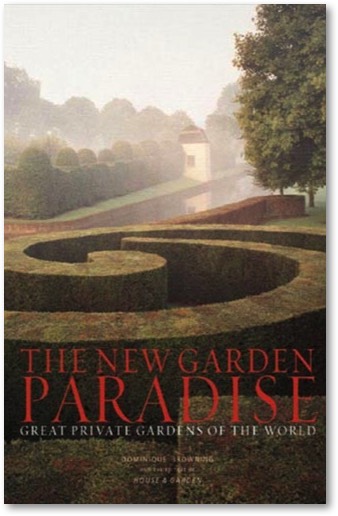
Musings » The New Garden Paradise: great private gardens of the world


New York
W. W. Norton 2005
Understanding takes a long time to arrive, but something has at last crystallized. I have been reviewing our club’s books for several years and without realizing it have developed a standard based on what I can learn from the author.
A book which teaches me something is a good book. The value of a book from which I learn very little or nothing at all should be questioned. It might be gorgeous to look at but at the end of the day what was the point of reading it? This may seem very draconian to some and is not meant to imply that some of these books are not worthwhile on their own terms. It is simply a personal point of view.
Superficial and ephemeral compilations are with us everywhere. The classical example is the campaign biography. After the great disaster of September 11, books of harrowing photographs of heroic firemen emerged to cash in on the unending interest and continued hunger for reminders of what took place.
Alas, cashing in are the operative words in many cases. The work of assembling the contents can be done by anyone without a strong authorial drive. An editorial assistant is given instructions, and lo & behold, a book emerges. No doubt there will soon be virtual editors who select images from a digital source without direct human intervention.
This is a very handsome book. Dominique Browning has edited House and Garden for many years. She has written columns for the magazine but has also published several other books on related themes. Her colleagues at the magazine assisted her on this occasion. The publishers have pampered her at every point along the way with the quality of the paper, quality of the images, scale of the pages and an elegant well-spaced typeface.
The primary goal of such a book is to spark envy. There is no way most of us could ever aspire to such properties. The book is meant to be displayed prominently, the so-called “coffee table” book.
Large opulent private gardens affect us at many levels. The owner of a large and thus important property needs to have a garden constructed which will complement its buildings and set them in context. One could hardly imagine a great house surrounded by untended scrub or few mousy little flower beds. Scale is everything.
If starting from scratch, the impetus may come from the owner or the architect he or she employs. If the owner buys a property with an old and dilapidated garden, then the pressure is on to restore it to greater glory. Either way the garden assumes immense significance very early in the person’s tenure. Almost all the great garden designers or landscape architects worked for wealthy proprietors. In the Bay area of San Francisco, Filoli comes to mind but unless the property becomes a trust or is opened by the owner very few get to see it.
This book is all about photography of the highest order. We are glutted with rich images. It is hard to know whether all that we see actually represents the garden in question or how much is due to the art of the photographer. The ratio of images to text is about 60: 40.
Browning quite rightly gives great importance to the plantsmen among designers. The last section of her book is devoted to such major figures as Piet Oudolf, James van Sweden, Christopher Lloyd and others. Reading about them and their work is never a waste of time. I recently reviewed a book by Christopher Lloyd which displayed his encyclopedic knowledge of plants and the incredible energy he devoted to the garden he inherited from his parents. (SFGC Garden Gazette May 2007)
The value of a volume like this is access to the work of talented designers whose achievements might otherwise not be seen by the public. To that end it is useful and a good book.

